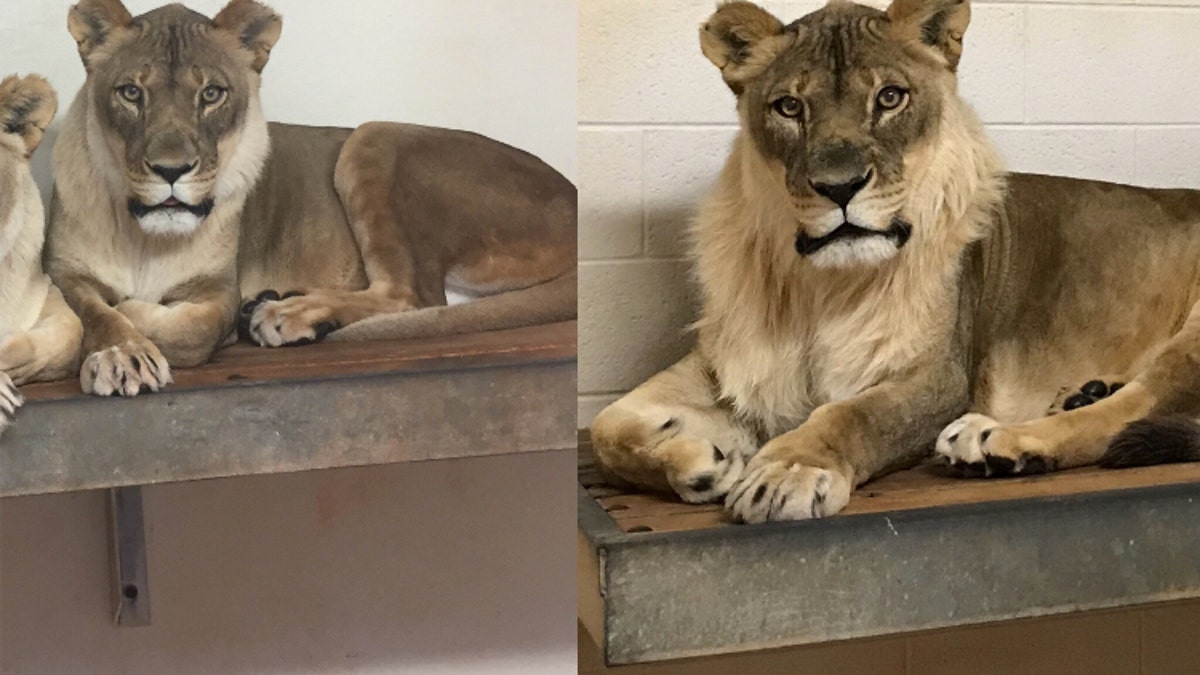
Bridget the lioness before and after growing her mane (Photo Credit Amanda Sorenson).
Bridget, an 18-year-old African lioness at Oklahoma City Zoo, has stunned her keepers by growing a mane.
In a blog post, zoo officials explained that Bridget has sprouted a “mini-mane.” Science Alert reports that the mane grew between March and November 2017.
Male lions develop manes when they are about one year old, as a result of increased testosterone production. Lionesses growing manes, however, is extremely rare.
MOUNTAIN LION CAUGHT AFTER WANDERING THROUGH TEXAS NEIGHBORHOOD
Experts are now trying to figure out how Bridget grew her mane. Staff at Oklahoma City Zoo recently obtained a blood sample from the lioness’ tail, which is being analyzed.
“Aside from a natural genetic component, another potential condition causing the mane growth could be a benign tumor located on her adrenal or pituitary gland as these regulate hormones like testosterone,” the zoo explained in the post.
Veterinary staff will continue to monitor Bridget, but say that the unusual condition is unlikely to affect the animal’s quality of life. Other than the mane, no change has been seen in Bridget’s overall health.
Although lionesses with manes are rare, they are not unheard of. In 2011, Emma, a 13-year-old lioness at the National Zoo in South Africa grew a mane, which was similar in length to that of a young male lion. Blood tests revealed that Emma had elevated levels of testosterone, so veterinarians removed her ovaries, which they believed was causing the issue.
'WORLD'S DEADLIEST SPIDER' MAY ACTUALLY HELP SAVE ITS OWN VICTIMS
Scientists were surprised to find that the ovaries contained cells that are normally only seen in the testicles of male lions. After her ovaries were removed, Emma gradually lost her mane.
Five wild lionesses with manes were also spotted in Botswana in 2014. In addition to their manes, the animals were also displaying behavior typical of male lions — one lioness was attempting to mount other females, according to New Scientist.
“Because these lions came from the same pride and developed the manes at a young age, researchers believe a genetic component in this population resulted in this characteristic,” explained the Oklahoma City Zoo in its post.
Follow James Rogers on Twitter @jamesjrogers
